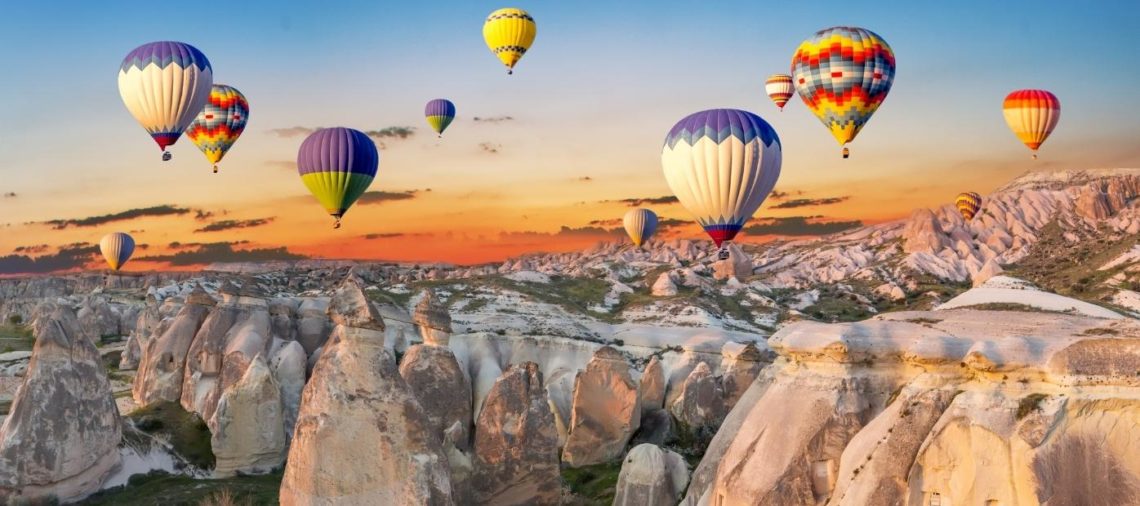Many of the summer holiday destinations are not in the most famous corners of the world. In fact, before the Internet era, some of the seasonal tourists often had to make superhuman efforts to find at least a map. It’s absolutely certain that after you read these lines, you’re going to dream of a trip to Cappadocia. It’s in Turkey, and it’s something different than the all-inclusive classic Antalya holiday, with Russians eating mountains of melon.
Cappadocia, the most spectacular region in Turkey
Even if its name seems to be extracted from Italian, we are talking about an ancient region in eastern Anatolia, part of Nevşehir Province in Turkey. Cappadocia, (pronounciation is “capadochia“) is denoted by the spectacular landscape of the fairy chimneys, the caves, and the expanding underground cities.
Accessible by bus or plane from Istanbul, Cappadocia is an undeniable attraction of any Turkey tour. The piece of resistance is the Göreme National Park, included in the UNESCO World Heritage Site in 1985, which protects rock sculptures dating from the Roman Empire era. Another major attraction is the city of Ürgüp, where you can stay in a hotel dug in the rock, which reminds of the Flintstone family adventures in the stone age.
Although human settlements in the region date back to the Bronze Age, Cappadocia was mentioned for the first time in Persian texts from the 6th century BC. The inhabitants of Cappadocia are also mentioned in the New Testament as part of the tribes that received the gospel of Jesus Christ on Whitsun.
The spectacular landscape of Cappadocia
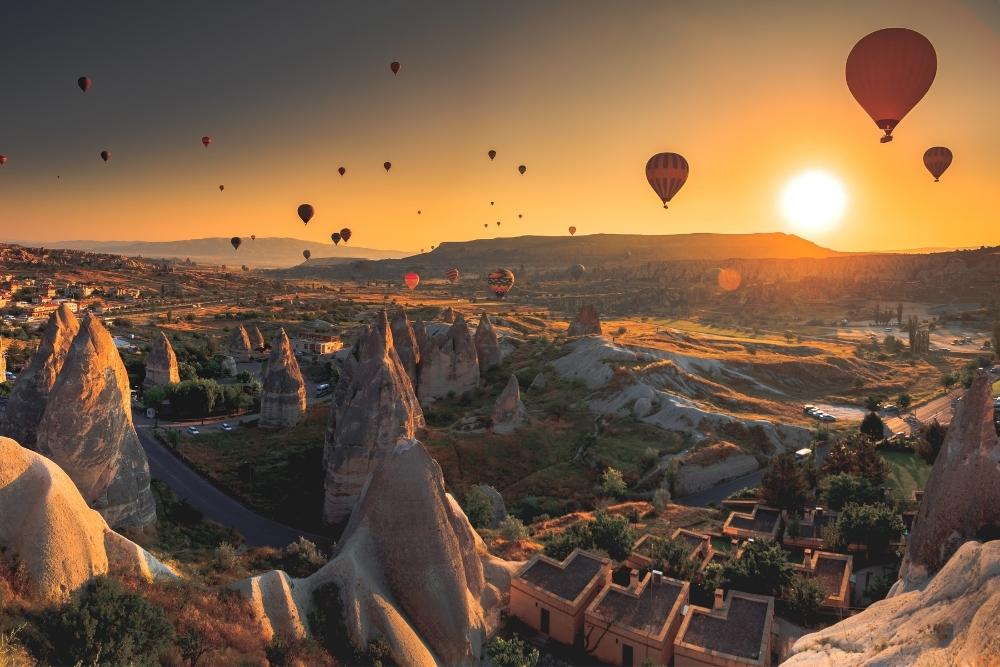
Cappadocia left a significant footprint during the Roman occupation regarding the architectural contribution. Before accepting Christianity as an officially recognized religion, its followers were forced to secretly practice the rituals. In this way, many people have returned to the prehistoric lifestyle. In the underground appeared vast and modern cities, cavernous halls for practicing religion, jilts carved in stone, and hand-painted frescoes. As surrealist as it sounds, underground cities like Derinkuyu and Kaymaklı would be the perfect setting for the Lord of the Rings movie.
Both cities penetrate through modest tunnels that descend gradually into the depths of the earth. There are obvious signs of hostility to intruders along the road. Boulders could be rolled from places hidden from the sight to crush the bodies and block the passage. And if you make a short stop to have a look up, you’ll see holes in the ceiling that didn’t only ensure ventilation but also represented convenient openings that could be used to throw buckets with hot oil!
In Derinkuyu, history speaks
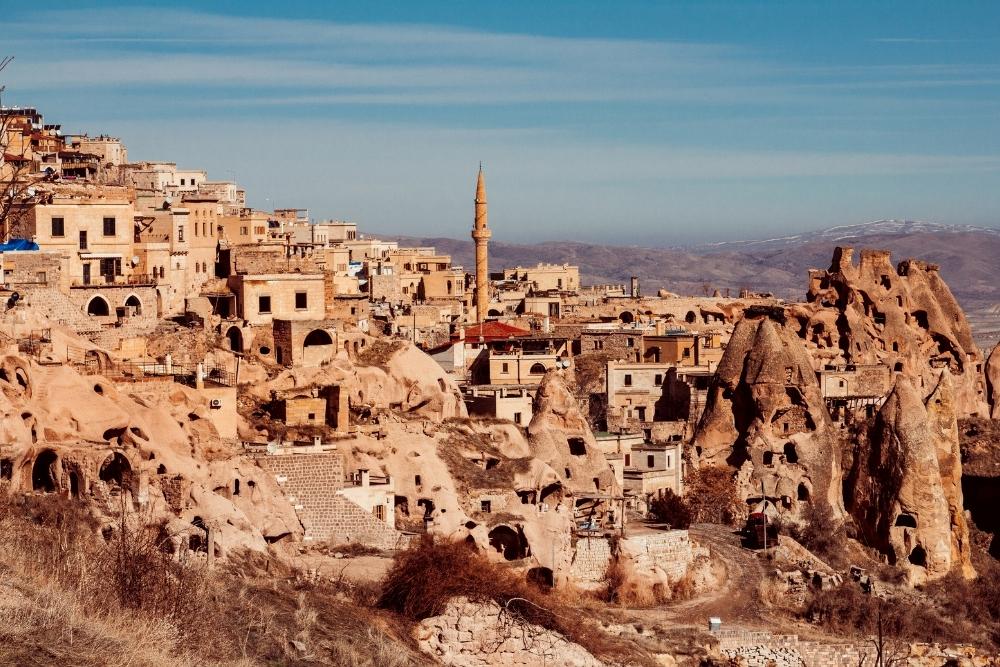
Although only the rooms and corridors selected are open to the public, Derinkuyu and Kaymaklı could easily accommodate thousands and thousands of refugees. There are enormous mills and presses for making food and wine, sealed storage rooms, containers for supplies, and numerous niches to provide ample space for families.
Although Christianity was finally adopted by the empire, regional instability and the possibility of Turkish commuting were the significant factors responsible for the continuing enemy occupation in Derinkuyu and Kaymaklı. Despite all the vicissitudes, the underground settlements in Cappadocia prospered and applied prehistoric construction techniques, given the geology of the places.
The city of Göreme lies in the center of a vast open-air museum, a truly monumental construction. In the surrounding hills, you will find simple dwellings dug in caves and residential complexes with several rooms to elaborated carved monasteries and huge churches where the religious paintings abound. To reach the most isolated points of interest, you have to climb stairs, cross upon stone bridges, rock walls, and do other maneuvers like Indiana Jones.
Göreme “dildos”
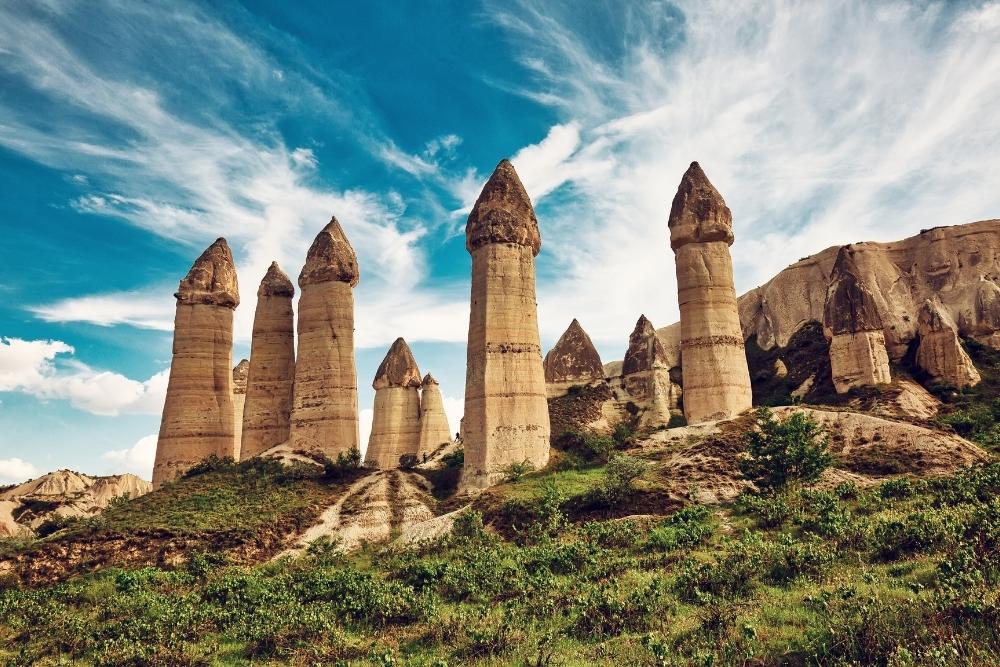
Even in the absence of obvious signs that people passed by, Cappadocia still manages to amaze with its unique natural formations. A special charm is given by the fairy chimneys, which have similar characteristics to the towers formed in the National Park at the Bryce Canyon in Utah. These imposing rocky peaks are based on soft sediments in different stages of erosion and on firm, less eroded bumps on top. Some formations of this kind reach heights of over 30 meters!
One of the most interesting parts of Cappadocia’s trip could be spending unique moments in the dwellings dug in caves, which were later transformed into luxurious hotels. At the entrance gate in Ürgüp town, you will find many tiny houses that manage to crowd a lot of people and provide comfort between the walls and rock hard. If you want to be fashionable, you can make a jacuzzi in the middle of a cave, then lie on a huge mattress placed in a stone frame.
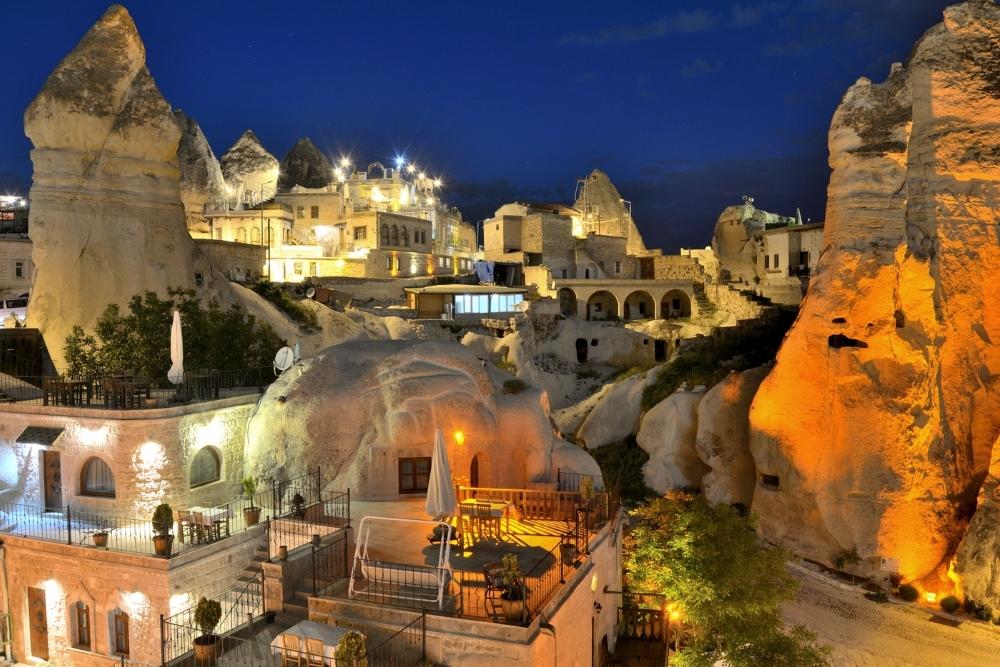
In the winter months, many of the hotels in the caves are equipped with fireplaces to keep warm in the eventuality of a massive snowfall. In the summer, they provide coolness, giving a well-ventilated refuge for the visitors who can hide from the outside heat. Leaving aside today’s comfort, it’s not hard to imagine why people were eager to live in caves thousands of years ago.
Cappadocia hosts bars made in the same prehistoric style, salons where you can smoke hookahs, restaurants, and clubs. At the end of a long day of sightseeing, you can explore any location you’s like, to enjoy the traditional Turkish food, a hookah, or a glass of local wine. The whole place is cherished by British, European, Australian, New Zealand, and North American tourists, who do not have to make much effort to feel good.
You may also like: How to visit Tbilisi, the capital of eclectic magic

